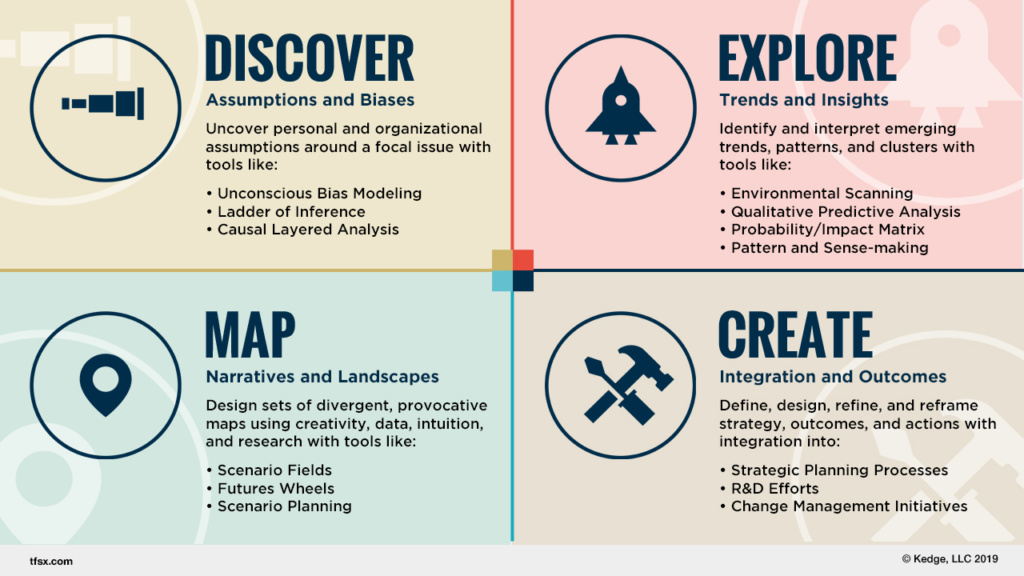Don’t Confuse Forecasting with Foresight

In a world that is enamored with short-term actions, incremental innovation, and quantifying everything, it’s important to understand that “forecasting” and “foresight” are not the same thing. They may have the future in common, but that does not make them equals.
Forecasting uses quantitative data and trends in an attempt to fill in gaps and extrapolate outcomes. However, data by its very nature is a snapshot of the past (just as trends are the present – you know about them because they are already happening). For this reason, forecasting utilizes trend hunting and trend analysis to deduce the future. In this attempt to simplify the world around us, we end up limiting unseen and untapped possibilities. The final result is the promotion of a singular, linear, “official future” that leaves us brittle and fragile in a VUCA environment (Volatile, Uncertain, Complex, Ambiguous). The practice of “linear extrapolation without dimensional imagination” has the power to strip us of wonder, hope, awe, and creativity in a world that desperately needs these co-creative mindsets.
In contrast, foresight incorporates qualitative and quantitative methods into a common formula that produces more holistic and nonlinear results: Data + Intuition + Research + Creativity = Foresight. Foresight leverages these various dimensions of information to capture provocations, emerging transformation, and the “unknown unknowns.”
Foresight definitely makes use of trends, but it goes well beyond them to include pattern recognition and sense making across multiple horizons.
More specifically, the Natural Foresight® Framework encourages the discovery and use of new perspectives and mindsets, challenging our existing mental models in order to sense shifts in values and uncover external disruptors. When we explore the future from the outside-in using the three environments of foresight (i.e. macro – external, meta – industry, and micro – organization or issue), even weak signals and novel issues can be uncovered to reveal that which might not be seen with forecasting’s linear or inside-out approach.

Through pattern recognition, sense making, and the examination of first, second, and third order implications and impact of trends, patterns, and value shifts, we can construct multiple pathways and maps of alternative futures. This is why future(s) is plural. Mapping multiple potential futures is necessary in order to create strategies that can be adaptive, resilient, and transformative in an environment of exponential change.
While forecasting keeps us bound to the status quo, foresight allows us to continuously learn, unlearn, and relearn, moving our organizational culture from traditional approaches that “keep the lights on” to becoming a living entity that matures into our higher order purpose. Viva la foresight!


